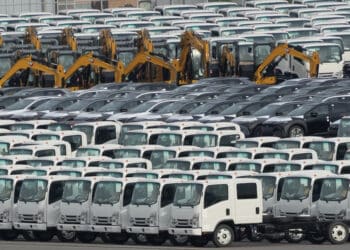Equipment industry expects challenges from tariff expansion
Dept. of Commerce adds 407 HTS codes to Section 232
Equipment manufacturers and dealers face increased costs after the expansion of goods covered under Section 232 tariffs on steel and aluminum.
The U.S. Commerce Department’s Bureau of Industry and Security added 407 Harmonized Tariff Schedule (HTS) codes to steel and aluminum derivative products subject to Section 232 tariffs, according to an Aug. 15 Department of Commerce notice in the Federal Register. The expanded duties, effective today, apply to the steel and aluminum content of covered goods.
Non-steel and non-aluminum components remain subject to other tariffs, according to the notice. The tariffs will be assessed on the value of metal content in each product.
Covered steel, aluminum goods
According to the notice, the list of covered goods now includes these heavy equipment-related products:
- HTS 8407/8408/8409 — Engines and engine parts;
- HTS 8412/8413 — Hydraulic motors and pumps;
- HTS 8425 — Pulleys, winches and jacks;
- HTS 8426 — Ships derricks, cranes and trucks with cranes;
- HTS 8427/8428 — Forklifts, cranes and handling equipment;
- HTS 8429 — Bulldozers, graders, loaders and excavators;
- HTS 8430 — Other earthmoving equipment;
- HTS 8431 — Parts and accessories for machinery in codes HTS 8425 through HTS 8430;
- HTS 8433 — Harvesting and agricultural machinery and parts;
- HTS 8455 — Metal-rolling mills and parts;
- HTS 8477 — Plastics and rubber processing machinery;
- HTS 8479 — Specialized construction machinery;
- HTS 8483 — Gears and gearboxes;
- HTS 8501/8503 — Electric motors and parts;
- HTS 8601/8602 — Diesel and electric locomotives;
- HTS 8603 — Self-propelled rail coaches;
- HTS 8607 — Rail parts and rolling stock;
- HTS 8701 — Truck tractors;
- HTS 8702/8703 — Heavy-duty transport vehicles;
- HTS 8705 — Special purpose vehicles, such as Caterpillar off-highway trucks and Komatsu mining trucks;
- HTS 8708 — Commercial vehicle parts and accessories.
Meanwhile, 60 tariff codes were reviewed and not included because they are part of separate trade investigations, according to the Commerce Department notice.
The Association of Equipment Distributors (AED) submitted comments opposing inclusion of more than 130 HTS codes that would affect equipment dealers, according to AED’s Aug. 17 email alert.
“The Department of Commerce’s inclusion notice didn’t include any reasoning and didn’t address stakeholder opposition,” according to the email. “AED continues to engage with the administration and lawmakers about the detrimental impact tariffs are having on the equipment industry and the need for trade certainty.”
The move follows proclamations issued by President Donald Trump in February designed to reform U.S. tariff policy, the catalyst for the most recent tariff push.
Mixed response
Despite potential problems for the equipment industry, representatives of the U.S. steel and aluminum industries see the move as beneficial, including Kevin Dempsey, president and CEO of the American Iron and Steel Institute trade organization, who highlighted plusses in an Aug. 18 release.
“A healthy domestic steel industry is vital to our national defense,” he said. “The Section 232 program recognizes that steel is essential for military equipment, critical infrastructure and emergency response needs. Strengthening these tariffs helps ensure that America is not reliant on foreign imports in times of national security threats and crises.”
In addition to the expansion of Section 232 tariffs, higher tariff rates, higher inflation, and sustained or higher interest rates could become problems for OEMs, dealers, lenders and consumers.
The tariffs threaten “stagflation” by pushing inflation higher and slowing GDP growth, according to an Aug. 18 Wells Fargo research note.
“Elevated tariff rates can impart a stagflationary shock to the economy and drive inflation upwards while depressing GDP growth,” according to an Aug. 18 Wells Fargo research note. “Additionally, the price effects of the current trade policy are more discernibly getting passed to the consumer, and we anticipate inflation rising in the latter half of the year.”
Check out our exclusive industry data here.









